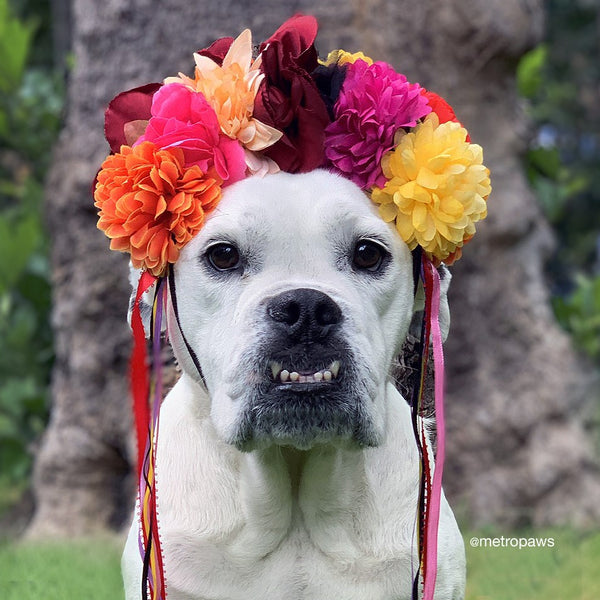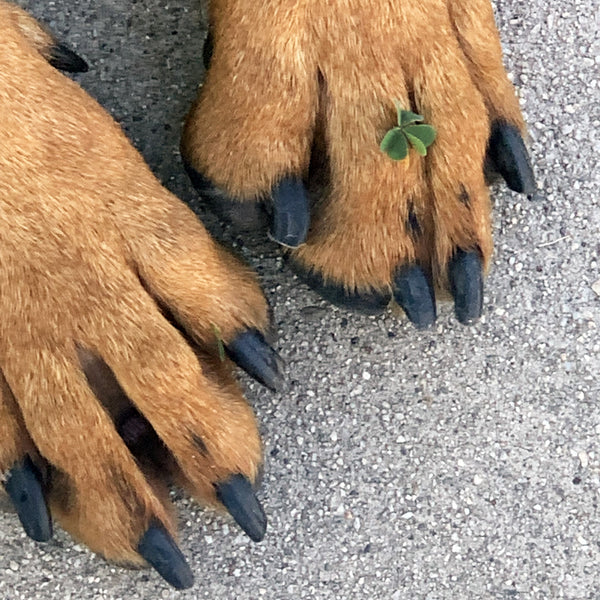
As the vibrant colors of spring start to blossom and the weather warms up, it's the perfect time to give your furry companion a fresh start. Pets need a little extra care during the transition from winter to spring. Here are some essential spring grooming tips to keep your pet healthy, happy, and looking their best.

During the winter months, many pets grow a thick coat to keep them warm. With the arrival of spring, it's time to help them shed that extra fur. Regular brushing removes loose hair AND helps distribute natural oils, keeping their skin healthy and their coat shiny. It also prevents matting and tangling, and cleans out dirt and debris. Depending on your pup’s coat, you may need to comb them daily or weekly, and you may need a comb, shedding tool, or grooming glove. Make sure to brush in the direction of fur growth!
Some dogs get uncomfortable and overheat from their winter coats, so it’s time to say goodbye to them in the spring.The shorter fur helps you see any insects or skin problems that may arise. You should also trim their paw hair length as dirt, mud, sticks, etc can get matted onto their paws and cause discomfort.
Please note: not every dog needs to have their fur cut short. Speak with your groomer or veterinarian about individual suggestions for your pup.
Wash away any winter grime with a thorough bath. Use a mild pet shampoo that won't strip their skin of essential oils, and make sure to rinse thoroughly to avoid any irritation. Regular baths can help wash away allergens from any outdoor fun. On average, dogs should be bathed monthly, but they may need more or fewer baths depending on the breed and activity level.
Click here for more tips on bathing your dog at home.
With the warmer weather comes the resurgence of fleas and ticks, and your pets will probably spend more times outside. These pesky parasites can cause discomfort and even transmit diseases. Take this opportunity to thoroughly inspect your pet's fur, especially in areas where fleas and ticks commonly hide, such as around the ears, neck, and tail. Speak with your veterinarian about flea and tick preventives.

Long nails can be uncomfortable for pets and may lead to ingrown nails or difficulty walking. Regular nail trims are essential for your pet's paw health. If you're not comfortable trimming your pet's nails yourself, visit a groomer or veterinarian. Aim to trim your pet's nails every 3-4 weeks, or when you notice they've grown too long.
Dental problems can lead to serious health issues down the line, so incorporating regular dental care into your pet's grooming routine is crucial. Brushing your pet's teeth regularly with a pet-safe toothbrush and toothpaste can help prevent plaque buildup and keep their breath fresh. Additionally, consider providing dental treats or toys designed to promote oral health.
Learn more about pet dental health here.
Remember, regular grooming and vet appointments keep your dog happy and healthy. Groomers can help with trims and conditioning products for their skin and fur. The vet can give them updated vaccinations and perform a regular checkup.
We are all excited for the spring season, and we bet your pup can't wait for the extra time outside. Following these tips can help ensure a safe and happy spring season for all!
What are some things you do for your pup when spring rolls around?